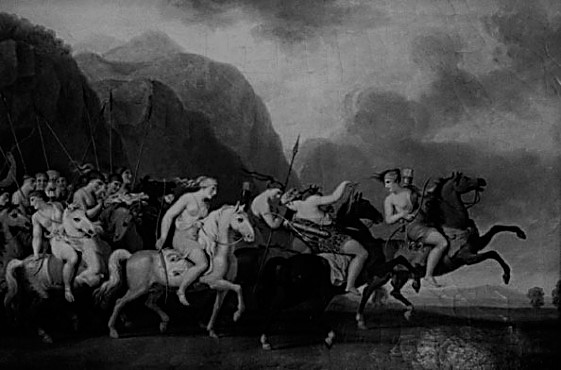Wonder Woman: the subversion of the female in the comics of the 1940-1950 decades
Main Article Content
Abstract
This article is a theoretical study carried out through the literature review methodology, with the aim of analyzing the impact of the character “Wonder Woman”, created in 1941 by the American psychologist William Moulton Marston, in the conservative American society of his time. The objective of this article is to discuss theoretically about the contributions that this character brought to the feminist movement at the end of the first wave, as well as to discuss the opinions formulated about the character, taking into account the ideation about women, in the patriarchal perspective. To discuss this character, who secured a place for women in the pantheon of the main heroes of the publisher DC Comics, we take into account a theoretical reflection on the sexual roles prevalent in the 1940s and 1950s in the United States. From feminist authors such as Simone de Beauvoir ([1949], 1970) and Catharine A. MacKinnon (1983), the objectification of the female body and female emancipation in the conception of the character Wonder Woman is discussed.
Image by Markus Baumeler from Pixabay.
Downloads
Article Details

This work is licensed under a Creative Commons Attribution 4.0 International License.
References
ANDRADE, Ana Flávia Pereira. Grande Hera! A representação do feminino na Mulher-Maravilha. Monografia. Curso de Comunicação Social – Audiovisual, da Faculdade de Comunicação da Universidade de Brasília, 2012.
ASHFORD, Theresa K; CURTIS, Neal --- "Wonder Woman: An Assemblage of Complete Virtue Packed in a Tight Swimsuit. Law, Technology and Humans - LawTechHum, 2(2), 25, 2020. Disponível: http://classic.austlii.edu.au/au/journals/LawTechHum/2020/25.html
BEAUVOIR, Simone. O Segundo Sexo. 4a ed. São Paulo: Difusão Européia do Livro, 1970.
CLARK, Alan; CLARK, Laurel. Comics: uma história ilustrada da B.D. Lisboa: Editora Distri Cultural, 1991.
GOLDIN, Claudia D. The role of World War II in the rise of women's employment. The American Economic Review, p. 741-756, 1991.
HALLIWELL, Martin. American Culture in the 1950s. Edinburgh University Press, 2007.
HENDRIX, Grady. "Out for Justice". The New York Sun. Edicção de 11 dezembrode 2007. Disponível em: <<http://www.nysun.com/arts/out-for-justice/67866/>>, acesso em 25 de junho de 2015.
LEPORE, JILL. Mulher-Maravilha - a verdadeira história da Super Heroína. In: cúlti & pópi. Disponível: http://culti-e-popi.blogspot.com.br/2014/11/mulher-maravilhaa-verdadeira-e-secreta.html, acesso 13/08/2015.
MACKINNON, Catharine A. Feminism, Marxism, Method, and the State: toward feminist jurisprudence. Signs: journal of women in culture and society. Chicago, p. 635-658, 1983.
SALLES, Catherine. As subversivas e sedutoras amazonas. História viva, São Paulo: Duetto, v.7, n.77, p. 56-59, Mar.2010. https://doi.org/10.1086/494000
WEEKS, Jeffrey. Sexuality and its discontents: Meanings, myths, and modern sexualities. Routledge, 2002.

